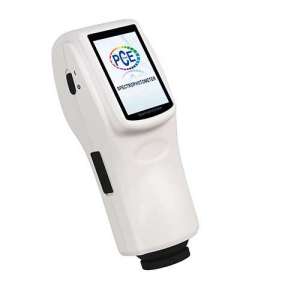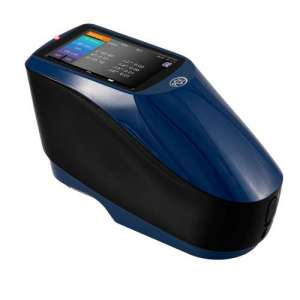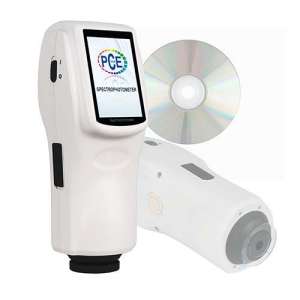Spectrophotometers
Spectrophotometersare color measurement devices used to capture and evaluate color. As part of a color control program, brand owners and designers use them to specify and communicate color, and manufacturers use them to monitor color accuracy throughout production.
Spectrophotometerscan measure virtually anything, including liquids, plastics, paper, metal, fabrics, and help ensure that color remains consistent from initial idea to delivery.
The spectral reflectivity curve provided by a spectrophotometer is often referred to as the "fingerprint" of color.
Types of spectrophotometers
There are three main types of spectrophotometers. Your selection depends on the application, desired functionality and portability. Spectrophotometerscome in different sizes, from portable devices to large desktop instruments.
0°/45° (or 45°/0°)
The most common spectrophotometer, this instrument measures the reflected light at a fixed angle of the sample, usually 45°, and can exclude the brightness to replicate as much as possible the way the human eye sees color. They are usually used to measure color on soft or matte surfaces.
Sphere
Sphere instruments can measure the reflected light at all angles to calculate the color measurements that are quite close to what the human eye would see. They are commonly used to measure color that has been applied on textured surfaces, such as fabrics, carpets, and plastics, as well as on glossy or mirrored surfaces, including metallic inks, printing on folios, and other very glossy surfaces.
Multi-angle
A multi-angle instrument sees the color of a sample as if it were moving back and forth, in the same way that it would rotate a sample to see the color from different angles. Today's multi-angle instruments are used for specially coated pigments and colors with special effects with additives such as mica and pearlescents, such as nail polish and car coatings.
Components of a spectrophotometer:
Spectrophotometry buckets. In the foreground, two quartz suitable for working with ultraviolet light; in the background, plastic, for colorimetry (i.e. using visible light).
Light source:
The light source illuminating the sample must meet the following conditions: stability, directionality, continuous spectral energy distribution and long life. The sources used are: tungsten lamp (also called tungsten), xenon arc lamp and deuterium lamp that is used in atomic laboratories.
Monochromator:
The monochromator isolates the desired wavelength radiations that impinge or are reflected from the assembly, it is used to obtain monochromatic light.
It consists of the inlet and outlet slits, collimators and the dispersion element. The collimator is located between the entrance and exit slit. It is a lens that carries the beam of light that enters with a certain wavelength towards a prism which separates all the wavelengths of that beam and the desired length is directed towards another lens that directs that beam towards the output slit.
Sample Compartment:
It is where the interaction takes place, R.E.M with matter (it must occur where there is no absorption or dispersion of wavelengths). It is important to note that, during this process, the Lambert-Beer law is applied at its best, based on its absorption laws, with regard to the passage of the molecule from fundamental-excited.
Detector:
The detector is the one who detects a radiation and in turn leaves it in evidence, for later study. There are two types:
(a) those responding to photons;
b) those that respond to heat
Recorder:
It converts the physical phenomenon into numbers proportional to the analyte in question.
Photodetectors
In modern instruments there is a series of 16 photodetectors to perceive the signal simultaneously at 16 wavelengths, covering the visible spectrum. This reduces measurement time, and minimizes moving parts of the equipment.
Espectrofotómetro PCE-CSM 10

Product Data Sheet:
Price:
€7,621.67 (inc. VAT)Espectrofotómetro PCE-CSM 20

Product Data Sheet:
Price:
€6,382.63 (inc. VAT)Espectrómetro PCE-CSM 8

Product Data Sheet:
Price:
€5,986.96 (inc. VAT)





